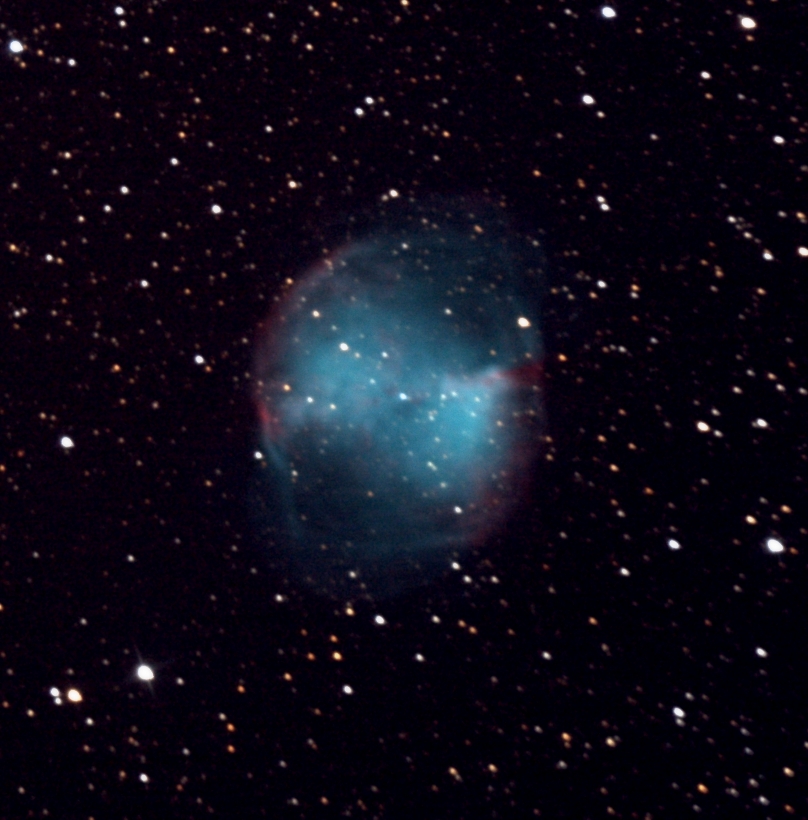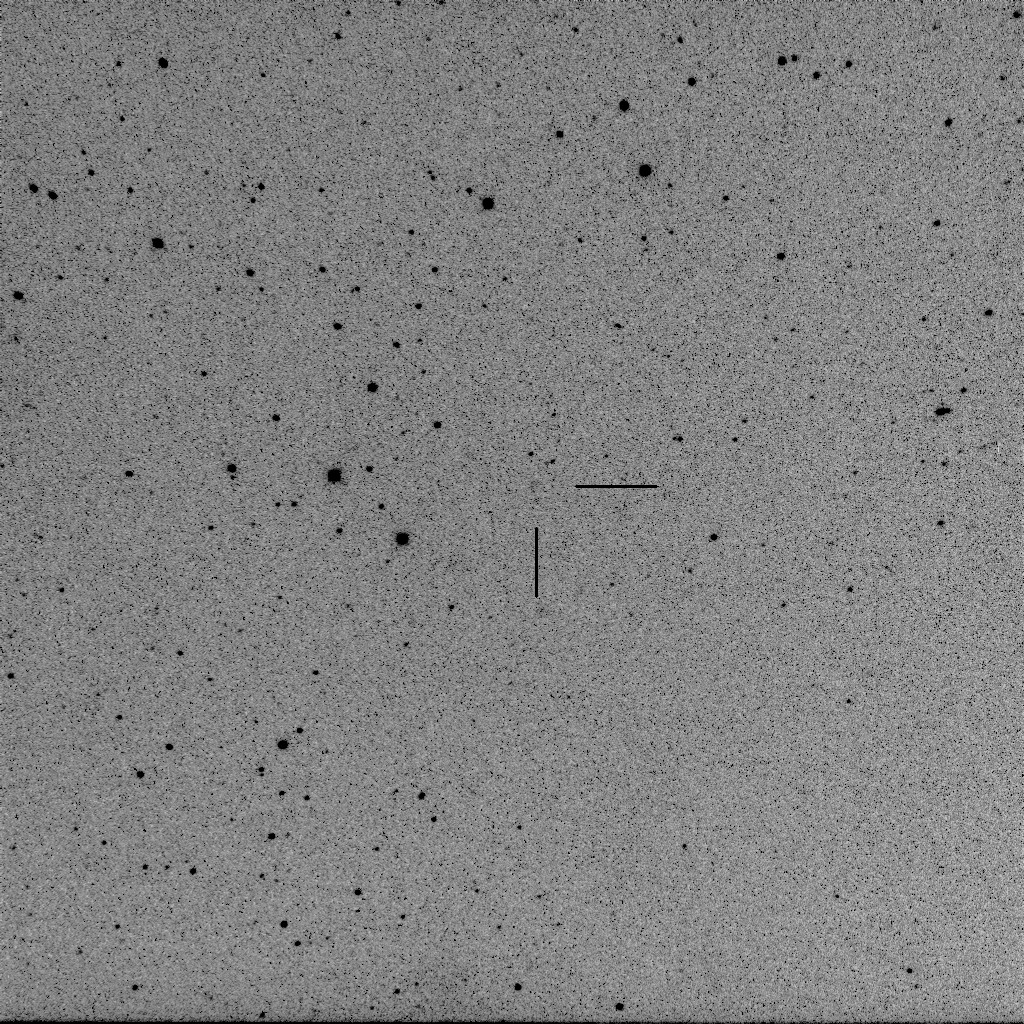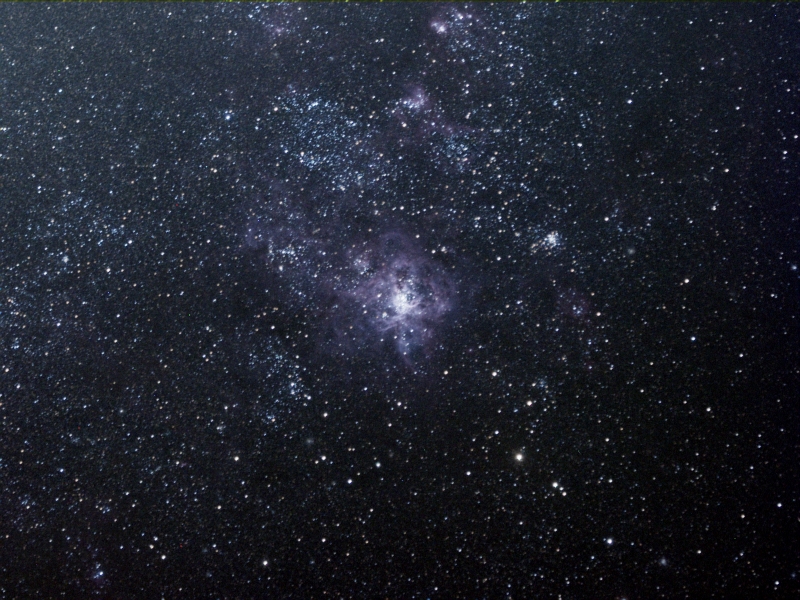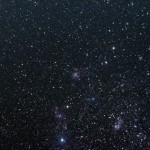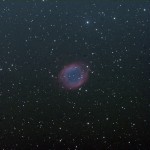I’ve imaged this object before using the Canon 350D in some very early experiments with imaging the night sky. This is the result of narrow band imaging using Ha, OIII & SII filters (3 ten minute exposures of each) with all three summed to produce a luminance frame. The telescope used was GRAS-2.
These images were taken with the moon in the sky as telescope time is much cheaper when this is the case and narrow band images are much less sensitive to the light from the moon.

This image is in false colour with Ha depicted in green, OIII in blue and SII in red. What is clear is that there is very little emission at the SII wavelength as there is very little red colour in the nebula. There is a central star in the nebula however, as it doesn’t emit light at the wavelengths used in this image it doesn’t appear in the picture.
OIII is an oxygen molecule in an ionised state that can only exist in very rarified gas clouds. It was first noticed during spectroscopic analysis of emission nebulae in the mid 19th century and mis-identified as a new element called Nebulium. It wasn’t until the 1920s that physicists correctly deduced it’s true form.
